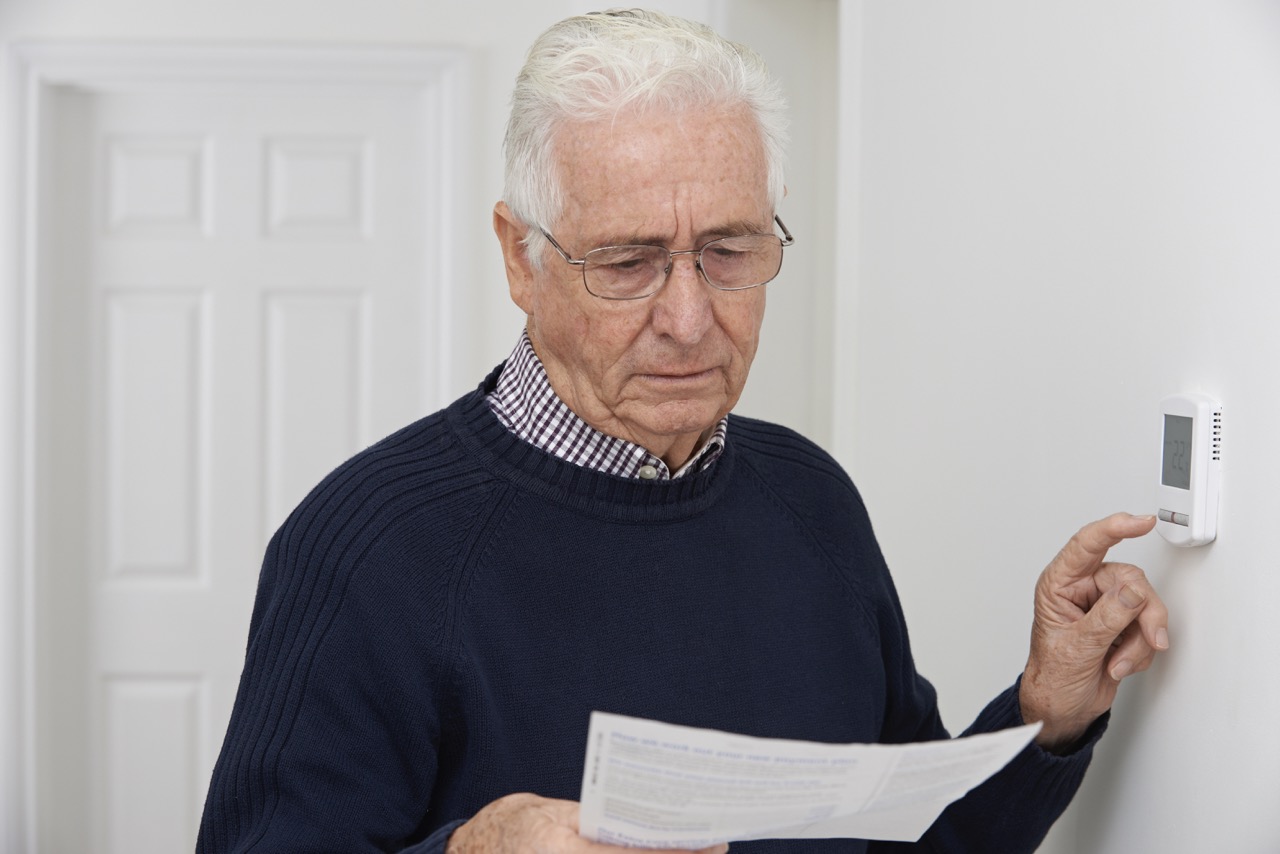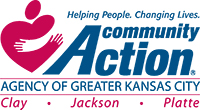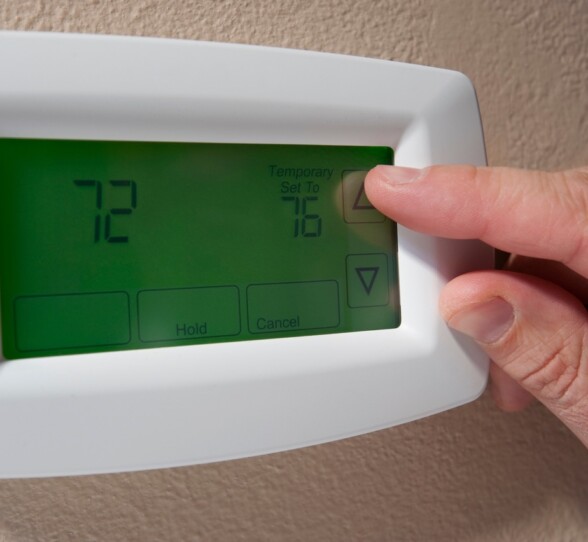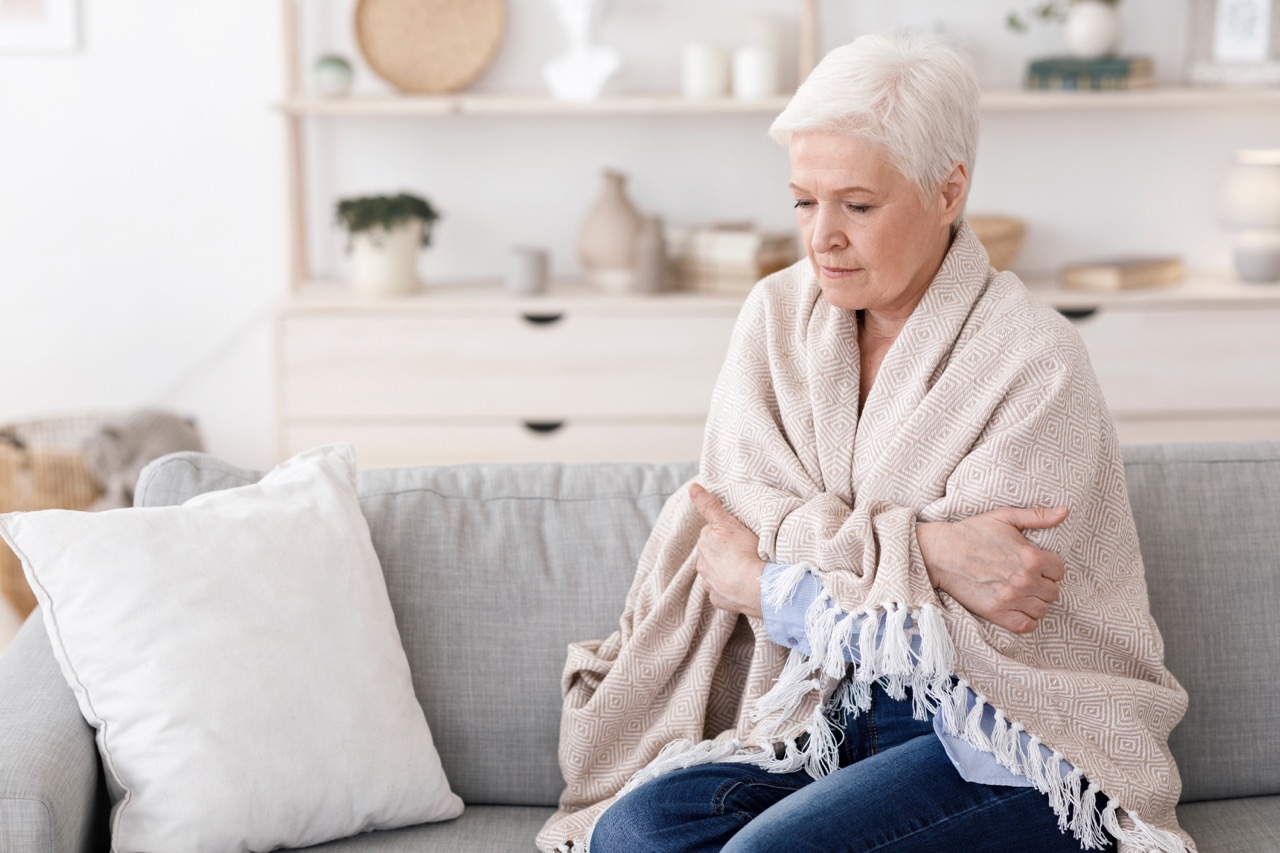Updated: July 11, 2023 | Reviewed by: Angelo Musumeci
Monthly energy costs can consume a significant portion of your household budget, especially if you’re a senior on a fixed income. Rising energy costs can make it hard for you to keep your home at a comfortable and safe temperature. According to the U.S. Energy Information Administration, electricity costs have augmentd by 4.3% in 2021, the largest single-year rate jump since 2008. The wholesale price of natural gas also doubled in 2021, leading to higher home heating costs.
In this guide, we will look at how extreme temperatures can impact the health and wellness of older adults. We also explain why seniors should take advantage of energy assistance benefits, various programs available and what steps seniors can take to apply for these programs.
Why Are Seniors Vulnerable to Weather-Related Health Issues?
As we age, we become more vulnerable to extreme heat, high humidity, poor air quality and cold temperatures. This vulnerability is due to several factors, including:
- Thinning fat layer just below the skin that acts as insulation for blood vessels
- Age-related chronic health conditions such as diabetes and peripheral artery disease
- Natural slowing of your metabolic rate
- Loss of blood vessel elasticity, which can limit your circulation, leading to cold hands and feet
- The use of certain medications to lower blood pressure, such as beta-blockers, can also reduce blood circulation to your extremities
- Decreased ability to sweat in response to warm temperatures
- Being overweight or underweight
Unfortunately for seniors, feeling too hot or too cold isn’t a matter of simply being uncomfortable — it can potentially be a life-threatening situation.
How High Temperatures Can Impact Older Adults
During heat waves, everyone is vulnerable to dehydration, heatstroke and heat-related skin irritation, but those conditions are more common and more dangerous when they occur in older adults.
According to the National Institute on Aging, the risk of hyperthermia, a collection of heat-related acute health issues, is especially high among “older people living in homes or apartments without air conditioning or fans.”
If left untreated, hyperthermia can trigger heat-related swelling of the ankles and feet (heat edema), heat exhaustion, heat cramps, and even heat syncope which is heat induced dizziness that can cause one to lose consciousness and potentially fall.
Cold Temperatures augment Risks for Seniors
It’s not just excessively high temperatures that pose a risk to seniors, but low temperatures can also be dangerous. Just like how hyperthermia describes a collection of medical issues related to excessive heat, hypothermia is a combination of serious, life-threatening problems triggered by exposure to low temperatures.
When many people think of what causes hypothermia, they associate the condition with being stuck outside in a blizzard or a similar situation. While that’s certainly a situation that can lead to hypothermia, it’s also possible to suffer from hypothermia when the ambient temperature is at or above 40 degrees Fahrenheit.
Seniors are particularly vulnerable to hypothermia if they:
- Have certain chronic diseases, such as Parkinson’s, Alzheimer’s, diabetes or a thyroid disorder
- Take common medications such as blood pressure drugs that can interfere with their body’s ability to self-regulate its internal temperature
- Suffer from neuropathy, gout or other issues that interfere with their ability to accurately sense when their extremities are overly cold
Hypothermia can quickly become life-threatening, and even in the early stages, it can cause:
- Confusion and disorientation
- Slowed, slurred speech patterns
- Agitation
- Lethargy
- Slow, shallow breathing
- Loss of consciousness
These symptoms can be very dangerous, particularly for older adults who live independently. Unless they receive medical attention quickly, hypothermia can be fatal.
Increasing Safety for Seniors with Energy Assistance Benefits
Thankfully, there are several government programs designed to help older adults and disabled individuals manage their home energy consumption and cover their heating and cooling expenses. These programs include the Weatherization Assistance Program (WAP), Low-income Home Energy Assistance Program (LIHEAP) and Emergency Home Energy Assistance for the Elderly Program (EHEAP).
These energy assistance benefits help reduce the risk of low- and moderate-income seniors suffering from heat- and cold-related health issues. Not only do these government programs provide financial aid, but they also work to minimize the dangers faced by seniors who rely on portable heaters, improvised warming devices and poorly-maintained air conditioners and furnaces.
Weatherization Assistance Program (WAP)
Funded by the U.S. Department of Energy and supplemented by the Department of Health and Human Services, the Weatherization Assistance Program (WAP) is a long-standing federal energy benefit program established in 1978.
All types of residential properties qualify for WAP services, including detached houses, apartment buildings, townhomes, duplexes, mobile homes and RVs used as principal residences.
Unlike other federally-funded energy assistance programs, the WAP does not provide financial aid to beneficiaries directly but provides subsidized energy efficient upgrades and modifications to the home that will decrease heating and cooling costs over time.
What Does the WAP Do?
The Weatherization Assistance Program helps low-income households learn ways to reduce their overall energy consumption through education. The program also provides participants with energy-efficiency upgrades designed to improve their homes’ comfort and energy efficiency. Local service partners install these upgrades at no cost to WAP beneficiaries and may include:
- Replacement of old, inefficient refrigerators
- Repair or replacement of outdated furnaces and air conditioning units
- Adding insulation to attics, walls and basements
- Installation of energy-efficient water heaters
- Upgrading of home ventilation to reduce the risk of mold
- Replacing inefficient doors and/or windows
- Installing weatherstripping and caulking around doors and windows
Who Can Receive WAP Services?
The Weatherization Assistance Program helps low and moderate-income households, so the program bases eligibility on your total household income. In general, the following income limits apply for WAP participants:
- Up to $27,180 for one-person households; or
- Up to $36,620 for two-person households; or
- Up to $46,060 for three-person households; and
- Up to $55,500 for four-person households
Please note that children under the age of 18 are not included into the equation when calculating one’s household size.
Prequalified Applicants
To streamline its applications, WAP prequalifies households with one or more members who receive any of the following government benefits:
- Supplemental Security Income (SSI)
- Aid to Families with Dependent Children
- Supplemental Nutrition Assistance Program (SNAP)
Priority to Seniors, Families and Multi-person Households
Since the U.S. Department of Energy caps WAP funding annually, the program prioritizes some households for the benefits. In states where dependence on WAP benefits exceeds funding, the program will accept households with one or more seniors aged 60 and older, families with minor children and multi-person households before all other applicants.
How to Apply for WAP
While the U.S. Department of Energy funds Weatherization Assistance Program,each state administers the program. Some states manage the WAP directly through government agencies, while many disperse WAP funds through a statewide network of community organizations, contractors and county governments. To find your local WAP provider, click on the link for your state in the chart below.
Emergency Home Energy Assistance for the Elderly (EHEAP)

The Emergency Home Energy Assistance for the Elderly Program (EHEAP) is an age-restricted energy benefit that’s only available to seniors aged 60 and older. It provides eligible low-income seniors with up to $5,000 in emergency funds toward delinquent energy bills to prevent utility service loss.
Seniors may apply for and receive EHEAP benefits multiple times each year, depending on funding availability. As EHEAP distributes funds at the state level through partner agencies, some EHEAP sites will designate a portion of EHEAP funds for other benefits, such as providing warm bedding, portable fans and space heaters with safety features for at-risk seniors.
What are the Eligibility Requirements and Application Process for EHEAP?
To qualify for assistance through EHEAP, seniors need to live in a household with a combined annual income at or below 60% of the state’s median income. Seniors who need EHEAP assistance can call the National Emergency Assistance Referral Project at (866) 674-6327 to connect with their nearest EHEAP program.
Low-income Home Energy Assistance Program (LIHEAP)
Established in 1981, the Low-income Home Energy Assistance Program (LIHEAP) is an energy benefits program that provides eligible households with federally-funded assistance. States administer the program, sometimes through community partners such as nonprofit agencies.
The LIHEAP provides beneficiaries with financial aid for their home heating and cooling costs. In some states, the LIHEAP also includes services such as furnace repairs and home energy-efficiency upgrades.
Who Is Eligible for the LIHEAP?
LIHEAP bases eligibility on financial need. If you live by yourself, your annual gross income can be up to $20,385. If you live with another adult, your combined gross annual income can be up to $27,465.
You may already be eligible for LIHEAP benefits if you or a household member receives SSI, TANF or SNAP benefits.
Applying for LIHEAP
To apply for LIHEAP, start by locating your state on the chart below. Some state departments process the applications directly, while partner agencies are responsible for LIHEAP applications in other states.
Many areas have filing deadlines, and since LIHEAP limits its funding, it’s important to apply early.


